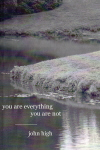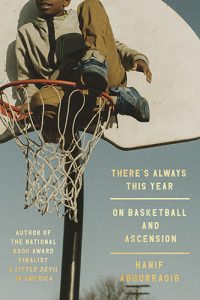You are Everything You are Not
You are Everything You are Not represents the conclusion of John High’s lyric narrative trilogy of books he began with Here and A Book of Unknowing. The characters of a mute girl and one-eyed boy return, joining in with a circus man, blind monks, ghosts, and assorted unspecified masters in a journey more spiritual than psychological, across an un-named landscape of trees, wind, streams and rivers, which often brings to mind Ingmar Bergman’s The Seventh Seal. Or, as Christopher Sawyer-Lauçanno describes it in his preface, “a realm as magically realistic as any found in a García Márquez novel.”
You are Everything You are Not represents the conclusion of John High’s lyric narrative trilogy of books he began with Here and A Book of Unknowing. The characters of a mute girl and one-eyed boy return, joining in with a circus man, blind monks, ghosts, and assorted unspecified masters in a journey more spiritual than psychological, across an un-named landscape of trees, wind, streams and rivers, which often brings to mind Ingmar Bergman’s The Seventh Seal. Or, as Christopher Sawyer-Lauçanno describes it in his preface, “a realm as magically realistic as any found in a García Márquez novel.”
Insofar that it is decipherable, the journey here seems to be a Zen-inspired investigation into the nature of The Self. Sawyer-Lauçanno points toward High’s engaging of D?gen’s The Genj?k?an, which contains statements such as “To study the self is to forget the self.” Under the lens of this reading, You are Everything You are Not is an endless loop of reoccurrence between symbolic identities of character. There is no end, there is no beginning. This is a state of affairs held up and attested to by statements in the book. Lines such as “so you discovered the beginning & / you inquire about the end?”, “we arrive back at the beginning,” “In a story there is never a beginning / & end,” and “this beginning: / born into always beginning” offer an easy enough presentation of the wheel of narrative returning in on itself.
High’s lines tend to mirror lessons found in Zen koans; for instance, “Go inside a question and your life becomes a question.” This tendency doesn’t do much to heighten their effect in terms of being poetry. Something (or perhaps various some things) is happening within this book, but a clear indication of just what it might be is never given. Although at times the clarity of an imaged moment is peculiarly attractive in its passing beauty: “pigeons & crickets all the way to the capital / letter of no separation. / walking into words there was only an echo.”
Ultimately, High fails to convince one way or the other that this book leads anywhere. Or rather he refuses that it should be so expected. And that’s okay, especially if, after all: “Everywhere we are not appears as a dream. / But it is not a dream.” Then where we are is in the real world. If the scene appears unfamiliar, excessively estranged from day-to-day reality, that should be no sort of hindrance to the reader’s identification with the writing, as Sawyer-Lauçanno explains: “To practice the Way is, in itself, enlightenment, yet High is careful not to insist that enlightenment is somehow superior to being. They are one and the same.” The value of this work accrues over time in multiple ways. There’s nothing to decipher. Instead there is much to accept, sit with, and mull over.





